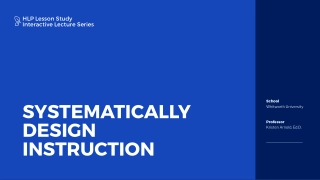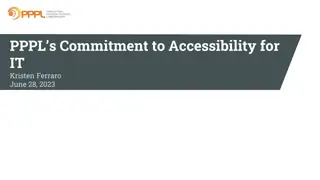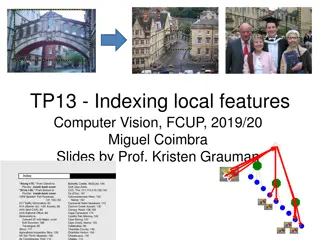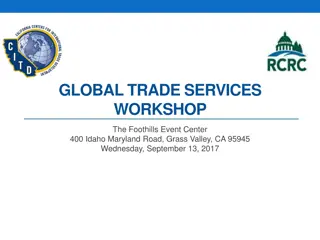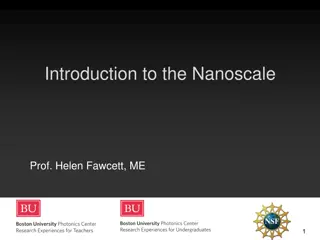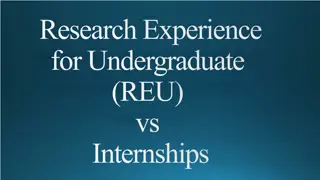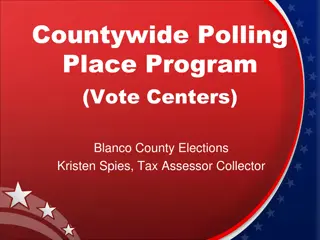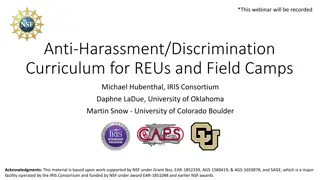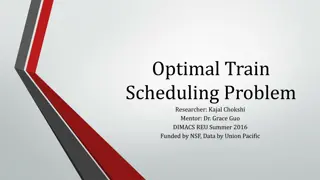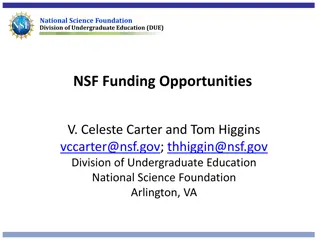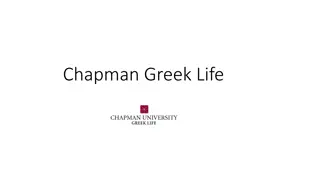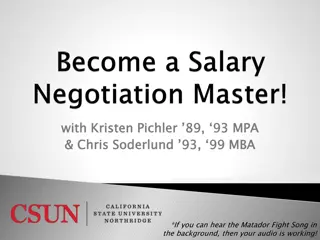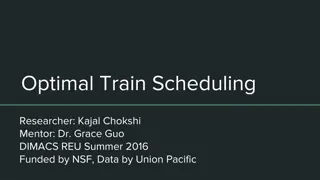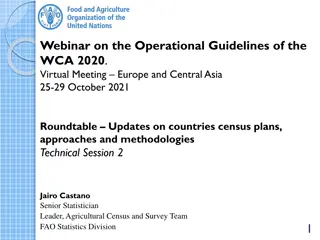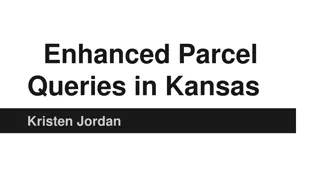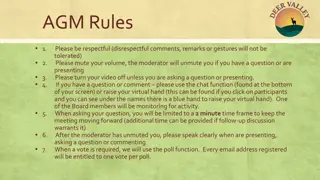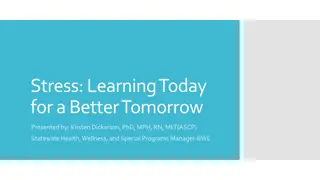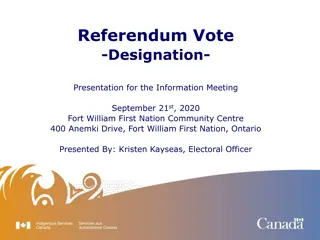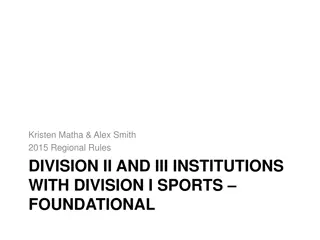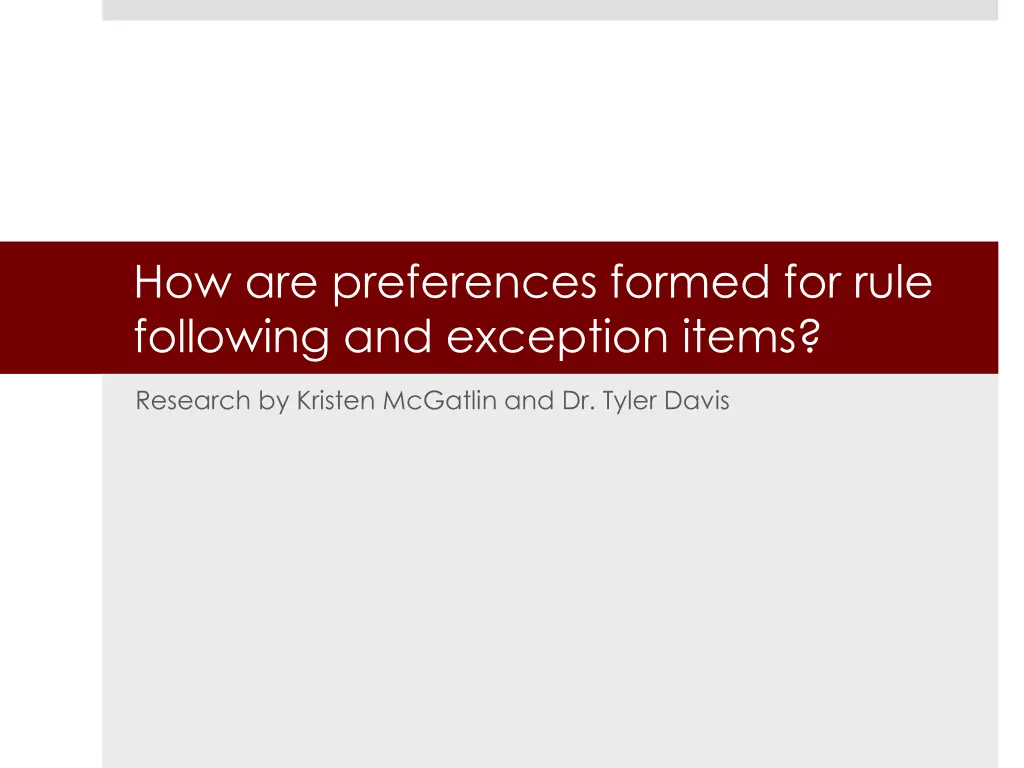
How Preferences Form for Rule-Following and Exception Items
Discover how preferences are developed for rule-following and exception items through research conducted by Kristen McGatlin and Dr. Tyler Davis. The study explores factors like fluency and familiarity in forming preferences, aiming to replicate previous findings on learning categories while extending research into the preference of exceptions over rule-following items.
Download Presentation

Please find below an Image/Link to download the presentation.
The content on the website is provided AS IS for your information and personal use only. It may not be sold, licensed, or shared on other websites without obtaining consent from the author. If you encounter any issues during the download, it is possible that the publisher has removed the file from their server.
You are allowed to download the files provided on this website for personal or commercial use, subject to the condition that they are used lawfully. All files are the property of their respective owners.
The content on the website is provided AS IS for your information and personal use only. It may not be sold, licensed, or shared on other websites without obtaining consent from the author.
E N D
Presentation Transcript
How are preferences formed for rule following and exception items? Research by Kristen McGatlin and Dr. Tyler Davis
Background Prototypes are attractive because they are easy on the mind Fluency mediates attractiveness Winkielman, Halberstadt, Fazeneiro, & Catty, 2006 More familiar, more typical faces rated as more attractive Peskin & Newell, 2004
Background cont. Rule following items categorized easier than exceptions (fluency) Exceptions recognized easier (familiar) Davis, Love, Preston, 2012
Purpose Replicate previous research on learning categories Rule following items are categorized more accurately than exceptions Exceptions are recognized more accurately than rule following items Extend previous research Preference of the exceptions vs. rule following items
Question Will participants base their preferences of the exception items on 1. Fluency: exception preference determined by context 2. Familiarity: exceptions always preferred
Method 2 (stimuli type: fribble vs. squares) x 2 (phase order: categorization> recognition vs. recognition> categorization) Measuring Preference rating Categorization scores Recognition scores Reaction times
Method: Procedure Squares Fribbles Learning Phase Recognition/Prefer ence Phase Recognition/Prefer ence Phase Category test/Preference Phase Category test/Preference Phase Recognition/Prefer ence Phase Category test/Preference Phase Category test/Preference Phase Recognition/Prefer ence Phase
Expected Results Recognition of exceptions better than classification of exceptions Faster on rule following items during testing but faster with exceptions during recognition phase Exceptions will be rated higher compared to rule following items during recognition and vice versa in testing phase
What do we learn? How preferences for objects are formed Theoretically applied early stages of understanding
Practical Implications Marketing Stand out or average? Performance in job and school settings

